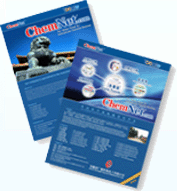Chemical News
-
New Composites offer better alternative to Lead in Radiation Shielding Applications
https://www.chemnet.com Aug 03,2007 plastemart.com
GE Plastics has launched a new line of thermoplastic materials with high specific gravity (HSG) that may replace lead in many healthcare applications that call for radiation shielding. Medical equipment and devices that produce x-rays and gamma rays must be shielded to protect operators, clinicians, patients, and sensitive
electronic components from tube leakage and room scatter. GE’s LNP* Thermocomp* HSG radiation shielding, high-density compounds enable x-ray shielding solutions without the use of known toxic substances, while providing greater design freedom and higher-volume manufacturing with lower total part cost through the use of injection molding.
The LNP Thermocomp HSG x-ray shielding compounds also provide the opportunity for design and cost advantages over lead in a wide range of healthcare applications. Due to increasing regulation of lead for toxicity and environmental risks, manufacturers are seeking new replacement materials. For example, the European Union's Restriction of Hazardous Substances (RoHS) directive calls for the near-elimination of lead in most electrical and electronic equipment. In addition, lead has design drawbacks. Lead-encapsulated glass plates for protection against x-rays must be very thick, limiting usage and design options. Further, lead
shielding can have “hot spots” – areas where x-rays can penetrate.
GE’s LNP Thermocomp x-ray shielding compounds have been shown to shield radiation up to the effectiveness of lead without leakage or hot spots. They are based on tungsten – a non-hazardous HSG material – in nylon 6. LNP Thermocomp HSG x-ray shielding compounds can be made with enhanced stiffness, strength, and impact resistance for demanding injection-molding applications.
GE Healthcare chose an LNP Thermocomp HSG x-ray shielding compound for several applications within its OEC 9800 x-ray machine, which is designed for procedures such as cardiac, vascular, and orthopedic surgeries. The shielding material is used in the collimator, which absorbs stray radiation and limits the x-ray exposure dose. With LNP Thermocomp HSG compound, GE Healthcare gained many advantages over lead
beyond compliance with environmental regulations. The transition from machined and stamped lead to injection-molded engineering resins may help enable tighter tolerance specifications and greater part consistency, enhancing the performance and safety of the x-ray equipment. Avoiding secondary operations required with lead, plus combining multiple components in one part, reduced total manufacturing time,
system cost, and complexity.
Future applications for LNP Thermocomp HSG x-ray shielding compounds could benefit from the capabilities of GE’s Global Application Technology (GApT) centers, such as user-centric design elements, injection molding application-specific testing, and teardown analysis, which is used to disassemble existing units made of traditional materials such as metals (e.g., lead) and identify part consolidation opportunities attainable with thermoplastic injection-molded parts. Print |
Print |  add to Favorites |
add to Favorites |  Close
Close


